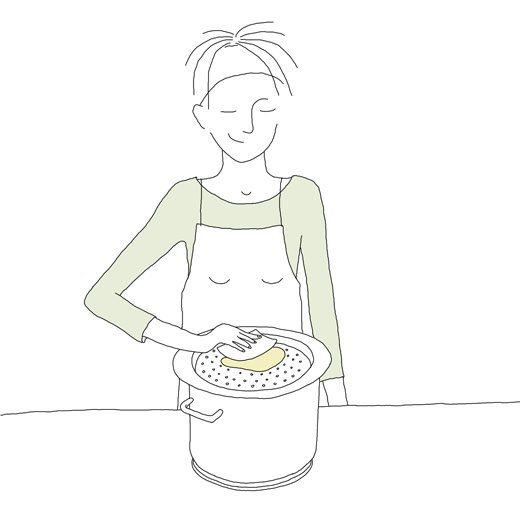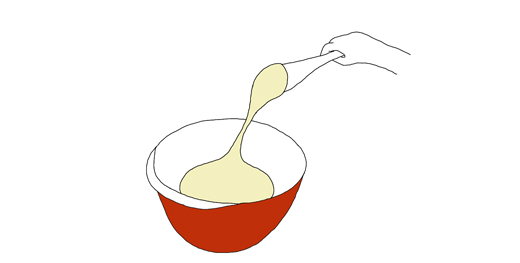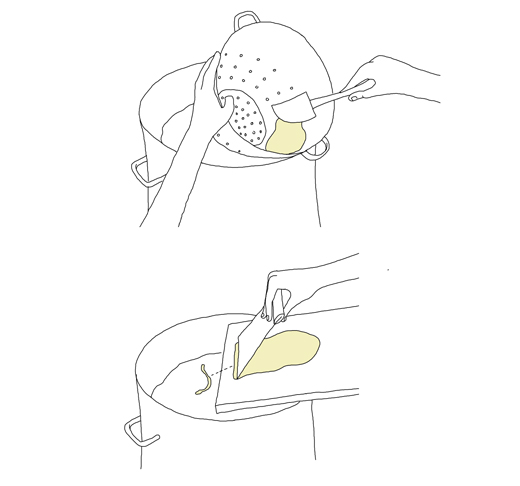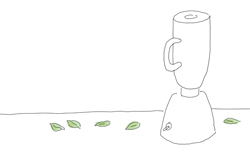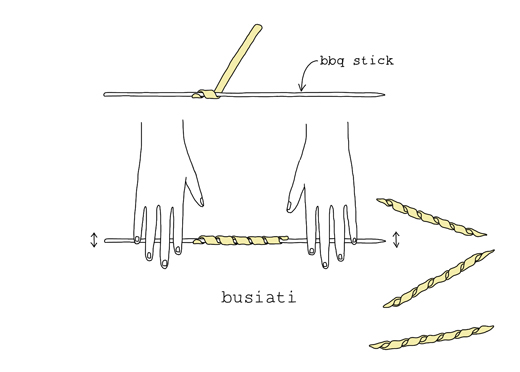
A couple of weeks ago I decided to arrange a pasta shaping workshop with a couple of friends. The workshop was a good excuse to get loads of pasta done and at the same time have some wine with friends. When it comes to pasta shaping, I’m a total beginner.
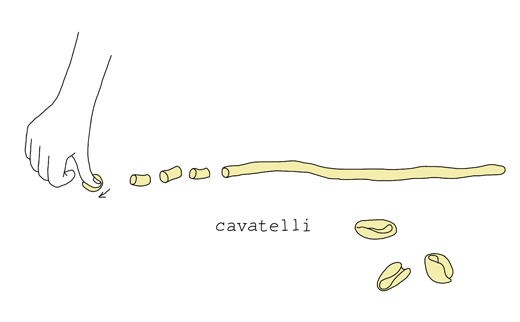
We made three different types, casarecce, cavatelli and busiati. The cavatelli was our favorite. It was fun and easy to do. And we made them on top of a sushi mat to created a striped pretty patterns (not shown in the illustration but you can watch this video). I also enjoyed making the casarecce, especially when they came out really small and thin. The busiati shape was the hardest and honestly we only made a few.
It was trickier than I thought especially when you want the pasta to be thin and not too thick. However I think in the end we did really well, but to master it, I will need loads of practice!
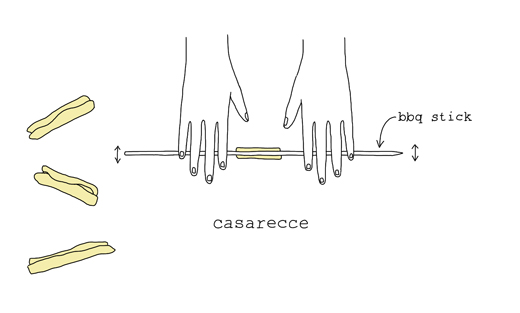
My friends brought an excellent Sicilian pesto with roasted eggplants. It worked really well with the cavatelli and busiati. For the cararecce I had prepared a spinach cheese sauce. To the meal we also made a tomato salad with roasted peppers. For dessert we had local (Brooklyn) Italian style ice cream topped with my homemade chocolate sauce. It was an excellent dinner.
To arrange your own pasta shaping workshop you will need…
• a pasta dough (that you can prepare in advance)*
• extra flour (all-purpose or semolina)
• a few bbq sticks (or something similar, they can even be a little thicker)
• a sushi mat (if you want the cavatelli or other shapes to have a pattern)
• rolling pin (we didn’t need to use it but can be handy for other shapes)
• something to drink while shaping (i suggest Prosecco)
• some antipasti to nibble while working: e.g salami, prosciutto, olives, pecorino, bread
• 1 – 2 different pasta sauces that can be prepared before hand
• suitable wine to serve to the final meal (or what you would like to drink)
• a salad
• something sweet to end the meal
*The pasta dough recipe I use is by Clotilde Dusoulier. Its very clever and easy to make. You just measure the eggs, take the same weight in flour and add 1/2 the weight in semolina (plus a little salt). I love it an it tastes exactly how I want it. Clotilde’s recipe is based on Michael Ruhlman’s 2 parts egg to 3 parts flour pasta dough ratio.
*
links
The Geometry of Pasta, the site & the book
Pasta Shapes Dictionary
recipes
Four-Cheese Ravioli with Tomato Sauce by Stephane Lemagnen
Spinach Lasagna by kokblog
Chicken Gnocchi by Emiko Davis
Spaghetti Carbonara recipe (with white wine) by Amateur Gourmet
Pasta – story by Jamie Schler and recipe & photographs by Ilva Beretta
movies
How to shape casarecce by Michela De Filio
Shaping busiati
Hand-Pulled Chinese Noodles by New York Times
Rolling out pasta with a rolling pin video by Michael Ruhlman

